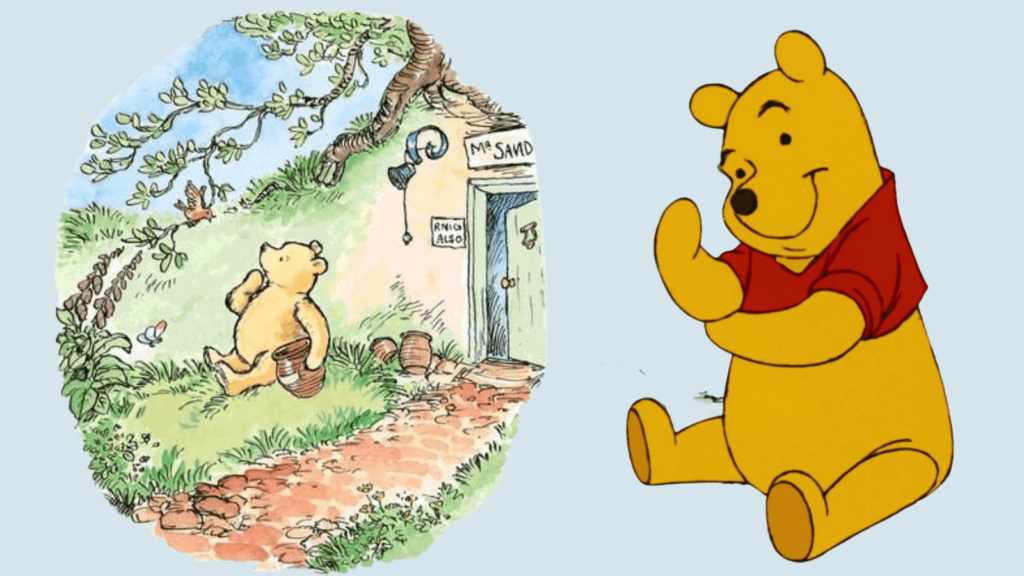This year (2022) Winnie-the-Pooh entered the public domain. This means people can now use his name, the story originally written by A. A. Milne and his original illustrations as they please. However, this doesn’t necessarily mean you can add Pooh Bear as you know him into your work. There still are rules, and that yellow “silly old bear” might be out of reach.

What is the public domain?
The public domain refers to content that isn’t protected by copyright laws. This means it can be used by anyone and adapted how they wish. If you locate illustrations within the public domain, you can use them within your own work. You can use them to advertise and edit them to suit your brand or business. Content can be protected by copyright laws and then later enter the public domain. This means, work that was once protected, now can be used by anyone. You don’t need to obtain permission from anyone and there aren’t restrictions on where you can use the work.
As of January 1st 2022, Winnie-the-Pooh entered the public domain, as did the rest of the fictional characters within the original book. The reason for this is that they have been around for 100 years. Content that begins under copyright can only be protected for so long before it becomes available to the public. Typically, if content was created before 1923 it will now be in the public domain. Also, if the work was never published, but the author or creator has been dead for 70+ years, the work can be released. Think of your favourite author, if they wrote content that they kept private, it could be made public many years later. The interesting part lies when it comes to content made by an unknown creator. This can only enter the public domain after 120 years.
Issues with public domain
When something enters the public domain, people often rush to try and use it first. Get their own twist or stamp on it before everyone starts using it. That’s great, however it’s important you get it right. Otherwise, you come into a lot of problems. Let’s go back to Winnie-the-Pooh and use him as an example. The book by A.A. Milne entered the public domain. Therefore, the illustrations of Pooh himself were allowed to be accessed and edited in any way you like. This however, doesn’t apply to the Disney version of the yellow bear. In 1926 the original version of the books was published. Disney however, bought rights to edit and change Pooh into the bear most of us know and love.
They turned him into a cartoon character that was arguably cuter and extremely lovable. Disney acquired the rights to edit and change the character in 1961. Since then, he’s grown to be a household name and everyone imagines him as Disney’s version. This is largely likely due to Disney creating films and series based around him. Rather than viewing sketches in a book, you can really see the character brought to life. The original bear did not wear a red shirt. He also had the hyphens in his name as we have written, but Disney dropped this for ease. Using the Disney version could get you into trouble, because they do own the rights to their adaptation.
Another factor to consider is, when authors have multiple books, not all enter the public domain at the same time. For example, with Winnie-the-Pooh, the second book hasn’t yet entered the public domain. Only the original. So, the likes of Tigger are still copyright protected. He doesn’t appear in the books until the second one. You’ll need a licence to use him, otherwise you could find yourself in trouble. The original book characters can be used however, in any way you like. This is where it gets tricky, because it’s easy to slip up. Not knowing which parts you can use or which versions, you could easily use the wrong ones and find yourself in copyright trouble.





